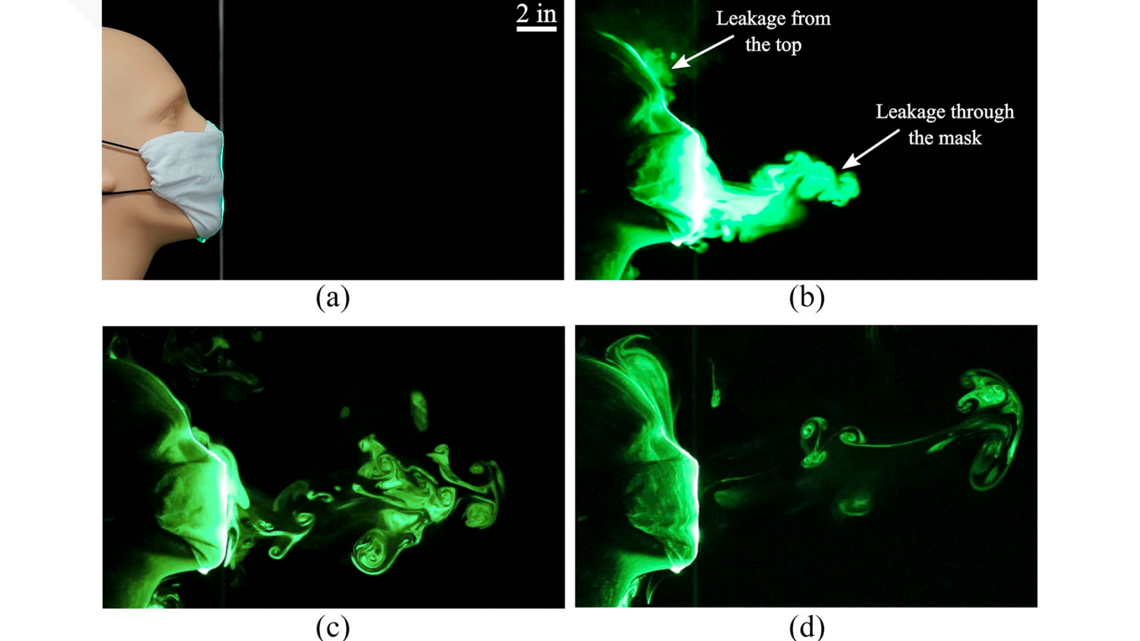Glow-in-the-dark coughs and sneezes? In the coronavirus era, this is what it takes for scientists to figure out which masks work best at stopping aerosol droplets from spreading after a cough or a sneeze.
Researchers from Florida Atlantic University turned to laser light and glycerine to demonstrate the best type of homemade cloth masks people can use to prevent the spread of COVID-19, according to UPI.
For people who have been donning a bandana, they have some bad news. But first, some details on how the experiment worked.
The scientists were looking to determine the distance droplets can move with cloth-based coverings used to obstruct those droplets and the study was published on Tuesday in the journal Physics of Fluids. "Such masks have been recommended for public use by various agencies, but there are no clear guidelines on the best material or construction technique that should be used," Siddhartha Verma, lead author and an assistant professor at Florida Atlantic told UPI.
The researchers sprayed a solution of distilled water and glycerin through the mouth of a mannequin to create the glow-in-the-dark droplets similar to those produced by coughs or sneezes, UPI reported. Earlier this year, an aerosols expert explained to AccuWeather how aerosol droplets move throughout the air. As an easy way of visualizing, she advised imagining how second-hand smoke behaves in different air currents to get a sense of how droplets move through the air.
Amid all of the recent commotion about mask-wearing, the scientists' findings are eye-opening, to say the least. The results of the study were also captured on video, which paints a compelling picture of what wearing a mask can do to prevent the spread of SARS-CoV-2, the virus that causes COVID-19. The footage of what happens when someone coughs or sneezes without having a mask on is equally as compelling.


"Without a mask, droplets traveled more than 8 feet," the researchers reported. In some cases, they traveled farther. Here's a look at how some of the other mask types performed in the experiment.
• Bad news for bandana wearers: With a bandana, droplets made it through the fabric and traveled 3 feet, 7 inches. It's still worth noting that this is much more effective than wearing no mask at all.
• Get the handkerchief out of your pocket and over your face: With a folded cotton handkerchief, they traveled 1 foot, 3 inches; with the stitched quilted cotton mask, they traveled 2.5 inches; and with the cone-style mask, droplets traveled about 8 inches.
• And the winner is: Quilted cotton! According to the scientists' findings, a stitched quilted cotton mask proved most effective as droplets only traveled 2.5 inches through the material. According to the video, this seemed to perform even better than what the researchers described as a "professional-grade face mask."
With beaches closing and some state and local governments rolling back reopenings and, in many cases, making mask-wearing mandatory in public outdoor places, masking up in the hot weather might seem like an unappealing idea. But there are some tips people can follow to wear masks while staying cool in the summer heat. Below, watch the full video of the Florida Atlantic University researchers' experiment.

